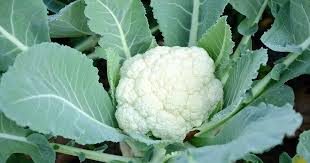
Pest management in Cauliflower
Share
Introduction
Cauliflower, a versatile and nutrient-rich vegetable, is a staple in many diets worldwide. However, cultivating healthy and productive cauliflower crops can be challenging due to the myriad of pests that threaten them. Effective pest management is crucial for ensuring high yields and maintaining the quality of cauliflower. In this blog, we will explore common pests that affect cauliflower, their impact on crop health, and the best strategies for managing and preventing infestations. Whether you're a seasoned farmer or a gardening enthusiast, these insights will help you protect your cauliflower plants and ensure a bountiful harvest.

Diamond back moth: Plutella xylostella
Symptoms of damage:
Young caterpillars cause small yellow mines on leaves
Scrapping of epidermal leaf tissues producing typical whitish patches on leaves
Full-grown larvae bite holes in the leaves and feeds on curd
Identification of pest:
Egg: Minute yellow-coloured eggs laid singly or in groups on the upper surface of leaves
Larva: Pale yellowish green caterpillar
Pupa: Pupation takes place on the foliage in a transparent cocoon
Adult: Small greyish brown moth.
Forewings have three white triangular spots along the inner margin.
Adult folds the wings that appear with triangular markings, opposite wing with diamond shape.

Management:
Remove and destroy all debris and stubbles after harvest of crop
Grow mustard as trap crop at 2:1 ratio (cabbage: mustard) to attract DBM for oviposition at least 10 days ahead of planting of main crop
Spray mustard crop with dichlorvos 76 WSC 0.076% to avoid dispersal of the larvae
Pheromone traps @12/ha
Crop rotation with cucurbits, beans, peas, tomato and melon
Larval parasitoid: Diadegma semiclausm @1,00000/ha (Hills–below 25–27ºC) Cotesia plutellae (plains) at 20000/ha release from 20 days after planting
Bacillus thuringiensis var kurstaki 2g/lit


Cartap hydrochloride 0.5% at 10,20 and 30 DAS (nursery) and primordial stage
Tobacco caterpillar: Spodoptera litura
Symptoms of damage:
Damage leaves and heads of cabbage and cauliflower
Damage leaves of radish and beet root
Identification of pest:
Egg: Masses appear golden brown
Larva: Young caterpillars are light green with black head or black spots. Well grown caterpillars are grey or dark brown
Adult: Adult moths are brownish colour. Forewings are brown colour with wavy white marking, Hindwings are white colour with brown patchs along the margin

Management:
Plough the soil to expose and kill the pupae
Grow castor along border and irrigation channel as trap crop
Flood the field to drive out the hibernating larvae
Set up light trap @1/ha
Pheromone traps (Pherodin SL) @ 15/ha to attract male moths

Hand pick grown up larvae and kill them
Spray Sl NPV @ 1.5 X 1012 POBs/ ha + 2.5 Kg crude sugar + 0.1 % teepol
Poison bait: Rice bran 5 Kg + Molasses or Brown sugar 500g + Carbaryl 50 WP 500g+ 3lit of water/ha
Spray chlorpyriphos 20 EC 2lit/ha or dichlorovos 76 WSC 1 lit/ha
Mustard aphid: Lipaphis erysimi
Symptoms of damage:
Both nymph and adults suck the sap from leaves, buds and pods
Curling of infested leaves and at advanced stage plants may wither and die
Plants remain stunted and sooty molds grow on the honeydew excreted by the insects
Identification of pest:
Aphids: Small, soft-bodied, pearl-shaped insects

Management:
Set up yellow stick trap to monitor aphid population.
Conserve the natural enemies viz., Cocciniella septempunctata, Menochilus sexmaculata,
Spray dimethoate@ 2 ml /lit
Summary
Cauliflower crops are susceptible to various pests that can damage leaves and curds, reducing yield. Common culprits include the diamondback moth, tobacco caterpillar, and mustard aphid. To protect your cauliflower, you can employ a multi-pronged approach. Planting decoy crops like mustard can lure and eliminate moths before they reach your cauliflower. Beneficial insects like ladybugs can also be encouraged to fight aphids naturally. Sprays like neem oil extract or Bacillus thuringiensis can be used for targeted pest control, while handpicking larger caterpillars offers immediate relief. By implementing these strategies, you can keep your cauliflower healthy and ensure a bountiful harvest.
